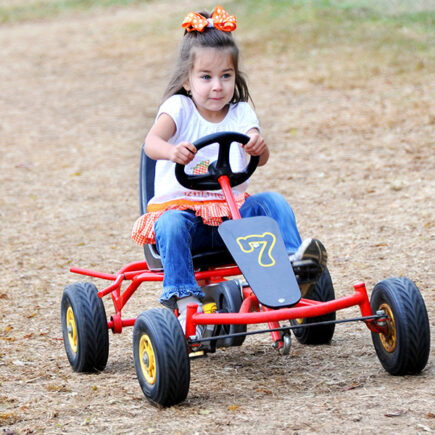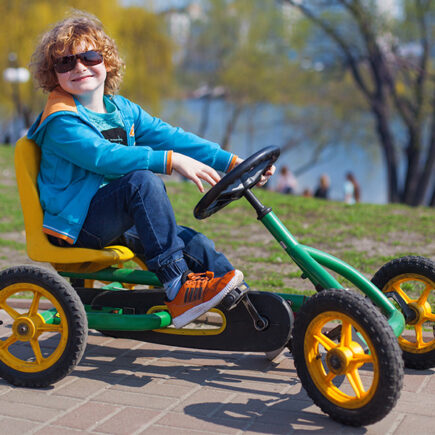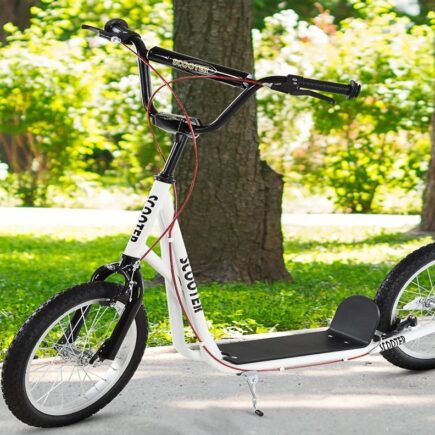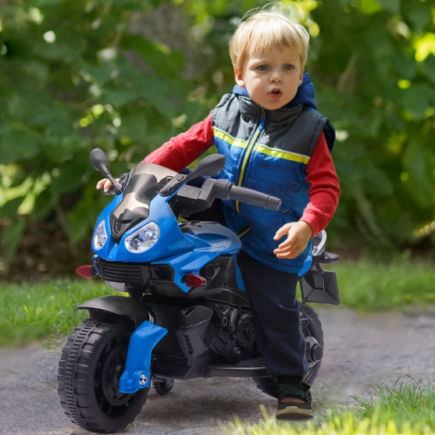For all parents, there’s no greater joy than seeing children smile because of a brand new toy — you won’t see a purer joy on a kid’s face than when they see their very own ride-on toy. Not only do these toys provide them with countless hours of fun and exploration — they also help kids develop their general coordination and gross motor skills.
With this in mind, finding the right ride-on toy is essential because it will affect how children learn to interact with their environment. And when they get a little older, there are plenty of electric ride-on toys you can find for them — but when your little one is just a toddler, they may not be ready for a motorized ride-on car that goes upwards of 3 miles-per-hour.
Toddlers under three years old can still enjoy ride-on toys: you just need to find some great push and pedal ride-on toys for them. With a great toy like this, your kid will start honing their spatial coordination and balance as early as possible, and you’ll be encouraging them to explore their surroundings as well!
Keeping that in mind, not all push and pedal ride-ons are the same. There are plenty of options on the market, and it’s easy for parents to become overwhelmed – that’s where Aosom.com comes in, with a helpful overview of what you can expect from push and pedal ride-on toys!
Two Different Types: Push and Pedal

These days, there are specific toys for every step of a child’s development, encouraging them to play safely and develop the appropriate skills at each stage. When it comes to toddler ride-ons, we can break them down into two basic types of toys:
- Push ride-on toys— they’re the best option for young toddlers because they don’t require much input from them, as they’re pushed by the supervising adults.
- Pedal-powered ride-ons — these are most often trikes or bikes, and they’re the logical next step for little ones that have mastered balance with previous models.
Here, we’ll take a look at what you should consider when buying push and pedal ride-on toys for kids that are still toddlers, and have yet to learn more about their environment or obtain more complex skills.
Push ride-on toys

As you’ll see on most manufacturer specifications, push ride-on toys are typically designed for kids between 18 and 36 months old. They’re mostly made out of sturdy plastic, and you’ll find they come in a huge variety of styles. Most of them also have some sort of tall plastic handlebar that allows parents to steer and push the kids as they play.
Some even include a small handlebar, so that the kids can get some exercise by pushing their ride-on as well when they’re not on it. These are intended for kids that already know how to walk, allowing them to focus more on coordination and balance as they play.
Pedal ride-on toys

Once kids are ready to start learning stuff on their own, a pedal ride-on toy will be perfect for them. These are mostly intended for children who are between 2 and 4 years old — at that age, the average kid can maneuver such ride-ons safely. Plus, their low-to-the-ground nature makes them excellent practice for bigger bikes and motorized ride-ons that’ll come later.
A lot of the pedal-propelled ride-ons come in a tricycle design, allowing kids to become comfortable with the combo of pedals and handlebars. Naturally, you can still push them around — but they’ll get the feeling of control along with the thrill of riding. And when they strike out on their own, they’ll obtain the necessary skills that’ll come in handy with their first real bike later.
How to choose the best push and pedal ride-on toys

When you’re choosing a push and pedal toy for your kids, there are a few things you need to keep in mind.
First of all, as all parents know, the safety of your child is paramount in any situation — even when buying toys. In this case, make sure that the ride-ons have the ASTM safety validation — this is the safety standard set by the entire toy industry. This exists to ensure there are no pinch points, sharp edges, or anything else that could be dangerous to your kid.
While looking at the specifications, make sure to check the maximum weight and height restrictions for the toy — they should be right there with the age guidelines. Also, keep in mind that you should use your best judgment as a parent to decide whether your kid’s coordination and balance skills are adequate, even if they fit the officially stated requirements.
Once you buy the toy, there are a few considerations to make as well — for one, parental supervision is absolutely necessary, even for kids that aren’t using a motorized ride-on. You want to make sure they can adequately control their movements and speed. They also need to be comfortable with stopping and slowing the toy.
Also, be as patient as necessary — ride-on toys are there to help your kid learn balance and control, so they likely won’t be naturals at this right away. And when you first give them the toy, find them a large flat area instead of paths that have obstacles or some other challenges. Before introducing any environmental difficulties, the kids should be able to practice on a flat, smooth area.

Don’t forget!
- Ensure the safety of your child by checking for ASTM safety specifications
- Check the age, weight, and height restrictions before buying a ride-on toy
- Determine whether your kid has the necessary skills for the specific model
- Always supervise them while they’re playing with ride-ons
- Let them practice on a clear, flat surface in the beginning.
- Go to Aosom.com and find the perfect ride-on toy for your child!




